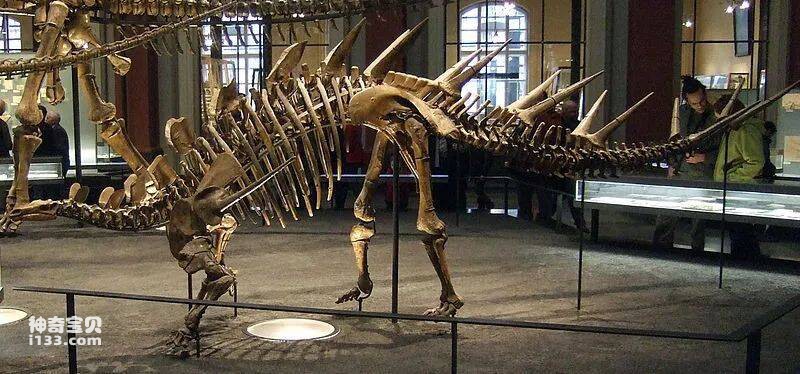About 230 million years ago in the Triassic Period, dinosaurs first appeared on the earth. The mass extinction at the end of the Triassic made dinosaurs gradually become the dominant species in the biological world. But this huge animal group that had dominated the earth for 160 million years suddenly perished at the junction of the Cretaceous and Tertiary periods about 65 million years ago. Why did the dinosaurs that were in an extremely prosperous state become extinct in a short period of time? Curiosity has prompted Chinese and foreign scholars to do a lot of research.

Scientists have discovered that the content of the trace element iridium in the clay layer at the end of the Cretaceous suddenly increased by more than 30 to 160 times compared with other periods. The iridium element is a rare element in the earth's crust but is widely present in asteroids. Therefore, the most popular and influential view at present is: 65 million years ago, a meteorite hit the earth, and the dust produced blocked the sky and caused drastic changes in the climate. Plants died in large numbers, and the dinosaurs were wiped out due to lack of food. There are actually many explanations and explanations for the mystery of the extinction of the dinosaurs, and there are more than a hundred published publicly.
Various theories about the extinction of dinosaurs
1. Oxygen steep drop theory
65 million years ago, the earth's climate changed suddenly and the temperature dropped significantly, causing the oxygen content of the atmosphere to drop, making it impossible for dinosaurs to survive. The question is: If so, how did the oxygen levels drop so sharply?
2. Theory of temperature drop
Dinosaurs are cold-blooded animals. They have no hair or warm-keeping organs on their bodies. They cannot adapt to the drop in earth's temperature, and they all froze to death. But why did frogs, crocodiles, and many other animals that were also sensitive to temperature survive, but not dinosaurs?
3. Gender imbalance theory
Due to the cold weather, most of the baby dinosaurs hatched by dinosaur mothers were male, which caused a serious imbalance in the male-male ratio in the dinosaur world. As the number of female dinosaurs gradually decreased, the dinosaur family also went extinct. But the sex of sea turtles is also controlled by temperature. Why do climate changes favor them?
4. Acid rain theory
There may have been strong acid rain at the end of the Cretaceous, which dissolved trace elements including strontium in the soil. Dinosaurs ingested strontium directly or indirectly through drinking water and food, and suffered acute or chronic poisoning. The last batch of them died. But it is hard to imagine that the earth has ever experienced such serious environmental pollution.
5. Poisoning theory
There was a period of angiosperms on the earth. These plants contained toxins. The dinosaurs ate too much of them, and the toxins accumulated in their bodies and they were all poisoned to death. But the puzzling thing is that plants couldn't poison all the dinosaurs scattered everywhere at once. Although some dinosaurs in the fossils pulled their necks back to appear to be poisoned, this may actually be due to the dryness and shrinkage of the body after death.
6. Theory of Earth Expansion
The strong movement of the earth's crust causes the earth's mass to spread outward and increase its volume. A large number of creatures such as dinosaurs became extinct because they could not adapt to the reduction of the gravitational field on the earth's surface. What is unconvincing is that changes in gravity do not occur in a short period of time. Creatures such as dinosaurs should have adapted mechanisms during their evolution. Others include the "eggshell thickening theory", "ocean shrinkage theory", "seabed methane eruption theory" and so on. But none of these inferences alone seem to be able to explain the sudden disappearance of dinosaurs and other animals. Many scientists currently believe that the extinction of dinosaurs and other species at the same time was probably the result of a combination of factors.
animal tags:
We created this article in conjunction with AI technology, then made sure it was fact-checked and edited by a Animals Top editor.